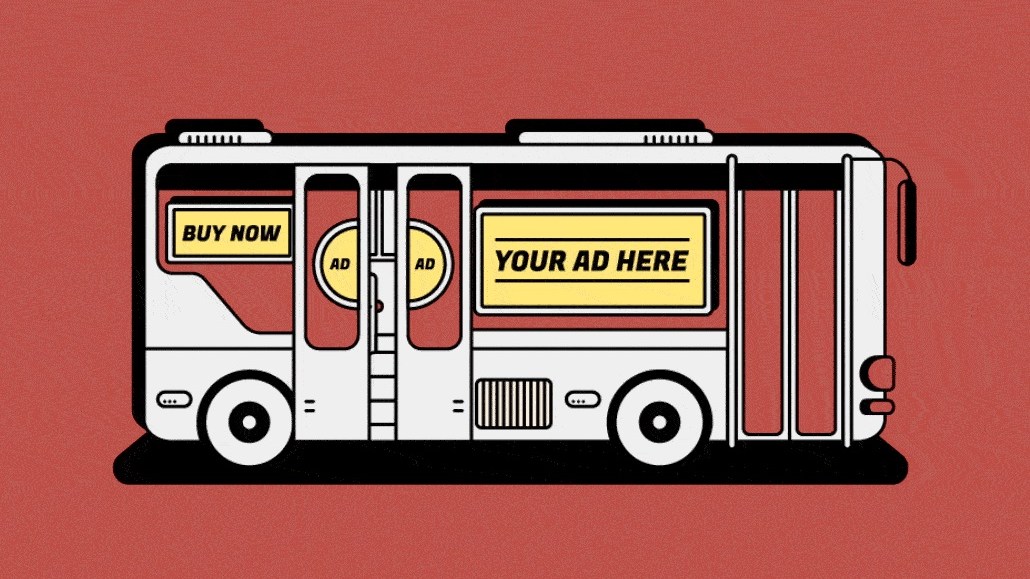How Zola is boosting its OOH spending in New York for ‘engagement season’

Zola wants to capture the attention of newly engaged — or soon-to-be engaged couples — in New York this holiday season. That’s why the brand is upping its out-of-home advertising in the city, taking over subway stations like Rockefeller Center as well as billboards in high traffic areas where tourists may be spending time in the city.
“For the last several years we’ve done subway out-of-home around engagement season,” said Zola CMO Victoria Vaynberg, adding that the brand sees Thanksgiving to Valentine’s Day as “engagement season” and that investing OOH in that time period has been fruitful in the past. “This year, we wanted to take it one step further to blanket New York with as much OOH as we can [as] this holiday season is probably the real return of tourists to New York for the holidays.”
OOH ads for the startup, best known for offering wedding registries, will not only be in the Rockefeller Center subway station (where the brand is hoping to capture the attention of couples going to visit the Christmas tree) but also with subway digital ads, billboards near Bryant Park as well as downtown in Soho and with wild postings throughout the city. At the same time, ads will appear on digital taxi-tops.
“Our approach is very much about how do we feel like we’re everywhere in the city, especially in the key places that we think people will be spending time like Rockefeller Center, Times Square, Diamond District and down in SoHo,” said Vaynberg. “We want to make a big brand push and expand our presence.”
The uptick in spending for OOH ads throughout what the brand calls “engagement season” will also feature Zola’s rebrand to highlight the expanded offering from Zola and highlight that it is an “ecosystem of planning tools” for couples. The startup has expanded its services in recent years offering personalized websites, a vendor database and more to be a one-stop shop of sorts for couples.
It’s unclear how much Zola is spending on OOH advertising throughout the holiday season as Vaynberg declined to share ad budget details. Per Pathmatics data, Zola has spent $7.39 million on digital advertising so far this year and spent $8.2 million on digital advertising throughout 2021. Zola dedicated roughly 48% of its monthly ad spend to streaming, 34% to desktop video, 9% to TikTok, 4% to Facebook and 4% to Instagram, per Pathmatics data. That data doesn’t not include spending for OOH or television as Pathmatics doesn’t track that spending.
Boosting spending on OOH ads throughout the holiday season makes sense to brand consultants and strategists who say that it will likely help the brand be in front of newly engaged couples seeking help with wedding planning.
“When people are planning a wedding, there’s usually a small window to get them and help them figure out who will be their partner,” said Allen Adamson, brand consultant and co-founder of Metaforce. “So being top of mind during the engagement season is important.”
Mat Zucker, senior partner and co-head of marketing for brand consultancy Prophet, noted that OOH in general has “some of the lowest CPMs, which is great” and that it can have a strong impact for brands, especially online brands that may be looking to “reassure” customers that they are a real brand. “Anyone can buy a Facebook ad but OOH seems more substantial,” said Zucker, adding that it can help Zola stand out to couples who may be out and about in the city.
In the New Year, Zola plans to move beyond its OOH spots in New York and add in social, streaming video and influencer marketing to the mix.
More in Marketing

Rembrand’s CEO wants to grow virtual ad placements in streaming, and he’s looking elsewhere for models
Omar Tawakol wants to improve advertising within the streaming world, and is working with advertisers and publishers to improve that experience.

Marketers are keen to use generative AI in ad campaigns, but hidden costs lurk
Marketers across the industry want to use AI to cut down on time spent in creative production. It’s not so simple in practice.

2025 was rough for Target. It could also be the year when its turnaround began
Much of the front half of the year for Target was defined by the company’s decision in January to pull back on DEI initiatives.








